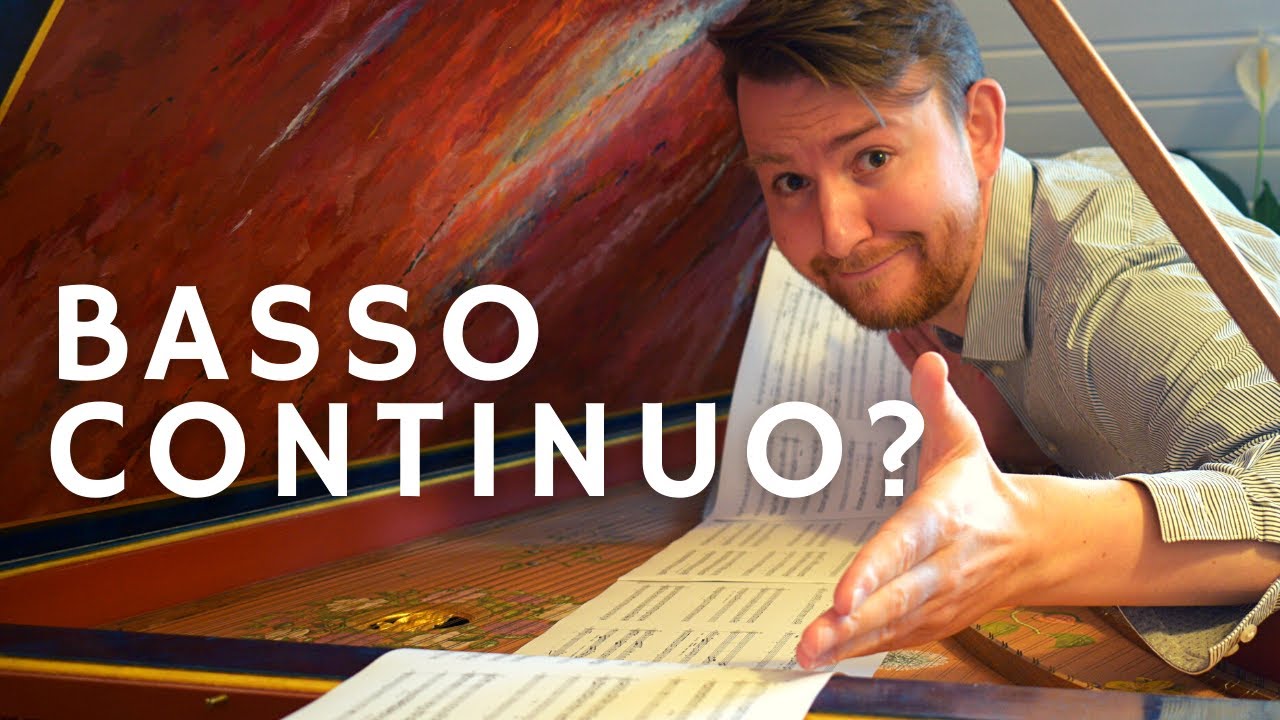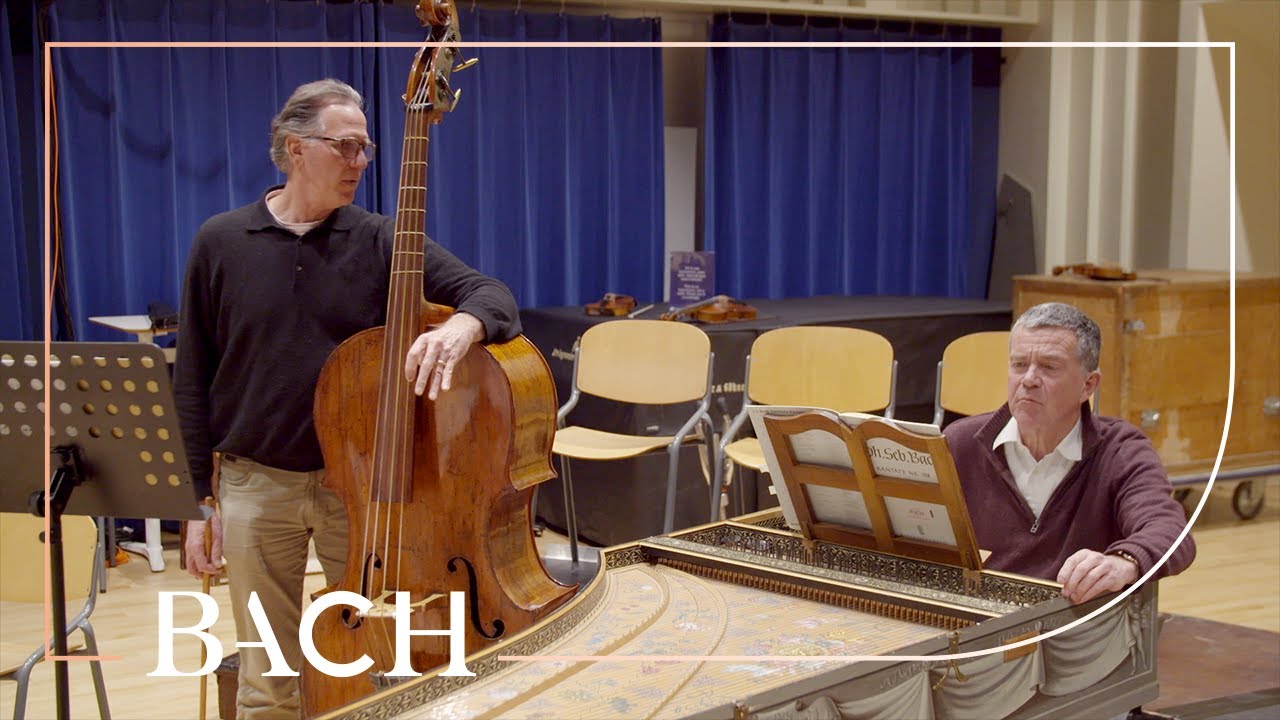Can someone explain to me the point of the left hand in continuo when it’s doubled on double bass, 3 cellos and even occasionally some violas? The jazz rhythm section freed the pianist’s left hand about 70 years ago! Thanks folks - genuinely need an answer as my continuo player ain’t too good.
What sort of music are you talking about? This is not a jazz forum at all.
Lully, Telemann, Purcell.
Jazz is not as heavily-bass-based as baroque. Doubling the bass line has the effect (to my ears at least) to glue harpsichord and bass strings together, both from a timbric and from a rythmic point of view. That is the reason, I believe, of the frequent “tasto solo” (i.e. left hand inly) we find in the scores. Rythmically, harpsichord provide a crisper line useful to keep everybody together. That is the principal reason of harpsichord in continuo: rhtymic, keep all toghether, melodic.
Hi Steve, in a continuo group of let’s say a harpsichord plus cello the harpsichord will give the attaque, while the cello will sustain the sound. No instrument is better suited to provide a clear and short attaque than a harpsichord. A cello on the other hand has a slower attaque but is well equipped to sustain a long note, it can even develop the sound by changing color, loudness or even pitch.
These are only the basics. In practice a harpsichord has various ways of extending a written note and developing it sound. My favorite example is Bach’s violin sonata in e minor, BWV 1023, 1st mvt. The continuo has only one written note for 29 measures. The rest is improvisation and delightful freedom.
Without knowing the context it is difficult to say, but double bass, 3 cello’s and viola could be an OR/OR situation. It could also be an exceptional moment when all forces are needed to balance trumpets, horns and others.
The bass line provides the reference point needed for the harpsichordist to realize the full accompaniment. If you remove the bass line, you will need to invent a new notational system, or somehow tell the player “this line is for thinking purposes only, do not play.”
I don’t know how to express this well, but in general 17-18C music and more is built from the bass. ‘Continuo’ is based on figured bass. The numerals specify the harmony and you work out the rest. If the keyboard player had no bass, how would figured bass work? The bassline is there for the harmonic structure. It so happens that for reasons such as @pieter.kuipers said you can double the bass line of the keyboard with other bass instruments, or theorbo etc, to reinforce the bass, the root of all the music.
The continuo section you appear to indicate seems grossly overweight for the composers you mention. Any reason?
On that subject, there is a view that there was such as thing as ‘big continuo’ in Italy at one stage where you may have keyboard and say 15 theorbos. I’d have to search out the references to that but I believe it was a real thing.
There is a very good article on Continuo in Grove Music Online. You can get free access via most large State Libraries.
Just a couple of quotes from the article:
Continuo playing in varying ensembles was an art practised by players of chordal instruments throughout Europe for roughly two centuries after about 1600. The instruments used included keyboard (organ, harpsichord), plucked string (chitarrone/theorbo, lute, guitar, harp) and bowed string (lirone, bass viol, violoncello). The continuo was fundamental to music in the 17th and 18th centuries to such an extent that its characteristic manner of notation, the Figured bass (It. basso numerato; Fr. basse chiffrée; Ger. bezifferter Bass), also became the basis for teaching composition and analysis and has remained in use for theoretical purposes throughout the 19th and 20th centuries (see also Generalbass and Thoroughbass).
The practice of continuo playing was originally closely associated with the growth of recitative (and hence opera and oratorio) and with certain kinds of solo music both vocal (monodies) and instrumental (early violin sonatas, etc.). No player may treat a continuo bass line as an opportunity for unbounded extemporization. The fact that the part is not fully written out, as an obbligato part would be, indicates its secondary nature: the function of the continuo is to accompany. While following this general principle, styles of accompaniment differed widely at different times and places. (See also Improvisation, §II.)
Nota bene this point:
No player may treat a continuo bass line as an opportunity for unbounded extemporization.
The Grove entry is quite long and has an extensive bibliography. I highly recommend you seek out access.
In my opinion there is another explanation why the bass line was always played by the harpsichordist, and is unrelated to the simple perpetuation of an historical usage.
Unlike many modern continuo realisations, and the exceptionally florid compositions by JSBach, no less, there is plenty of information in the sources that most continuo realisation consisted of right hand chords.
There is an acoustic effect whereby the listener perceives “together” instruments of similar timbre: when two oboes play something against the string orchestra, we perceive the “tune” of the two oboes as “separate” from the violins: music such as Handel’s Water Music is fully based on this effect.
Similarly, the harpsichord having an harmonic composition so unlike any other instrument in the baroque orchestra, its continuo chords are perceived as separate from the other instruments, both by other players and by the audience. If you fail to play a bass note, those chords sound odd without their bass (which is, as already observed, the foundation of classical harmony).
Thanks for the considered answers. I didn’t make it clear it’s about a Baroque orchestra. Guess I’ll just have to suck it and see ![]()
While I agree with everyone that the left hand is essential in terms of
the harmony, and that the harpsichordist should, as much as possible,
play all the important notes to preserve the structure of the harmony,
there’s absolutely nothing wrong in this case with simplifying an
overly-ornate bass line, so that only those notes that are relevant to
the harmony and meter get played. An awful lot of bass lines, especially
orchestral ones, are written to be played on cellos, and are a real
hassle to manage on harpsichord, if not completely impossible. (for
example, a good chunk of Vivaldi’s Summer with all the repeated notes)
Much better to leave the little notes to them, and concentrate on
hitting chords or finding complimentary effects where they matter and
support the overall ensemble.
Less busy bass lines are best doubled though, since they inform the
meter and harmony so much!
@steverod is it yourself playing continuo or somebody else?
I should mention that the whole point of continuo is figured bass, the standard, fundamental practice for a couple of centuries at least. Unless you are playing from a fully realised continuo part (always sub optimal) the player would be well advised to learn at least the rudiments of figured bass.
Two standard books that simply must be on the bookshelf are:
There is a good English translation:
C.P.E. Bach. Essay on the True Art of Playing Keyboard Instruments
Translated by William Mitchell. Originally published 1948 by W. W. Norton and Company.
F.T. Arnold. The art of accompaniment from a thorough-bass : as practised in the XVIIth & XVIIIth centuries. 2 vols.
Available here online:
These are the books I learned from. Others may recommend more recent texts.
Grove Music Online permits an individual to download articles for personal use. I’d like to upload the extensive article on continuo here but it is of course prohibited. I do recommend obtaining (free) institutional access.
I’m a B Mus and have those books on my shelf and use them, thanks.
Excellent. It is of course impossible to know people’s experience - unless you write a little about yourself in our Introductions category, which is always nice in this small community.
A pity no one here seems to know about jazz. It, like Baroque, is very theory based. The comparison between the rhythm section and continuo was really the discussion I was looking for.
I think, due to the remit for this forum people assumed you were asking about continuo, not about jazz.
Not really the right forum for jazz topics. Even if people are expert in that field and do know about it, it’s outside the remit and scope of the forum, and would be considered off topic.
But if you really want to start a discussion about jazz there is a category here called The Pub where you can talk about anything you like, totally ad lib. I don’t know how familiar you are with Discourse, but to post in a category other than General you have to use the web interface, which is the principal interface for Discourse not mail. Topics initiated by mail can only go to the General category.
I see. So you can discuss jazz or you can discuss continuo but not both together? and I was asking about continuo.

